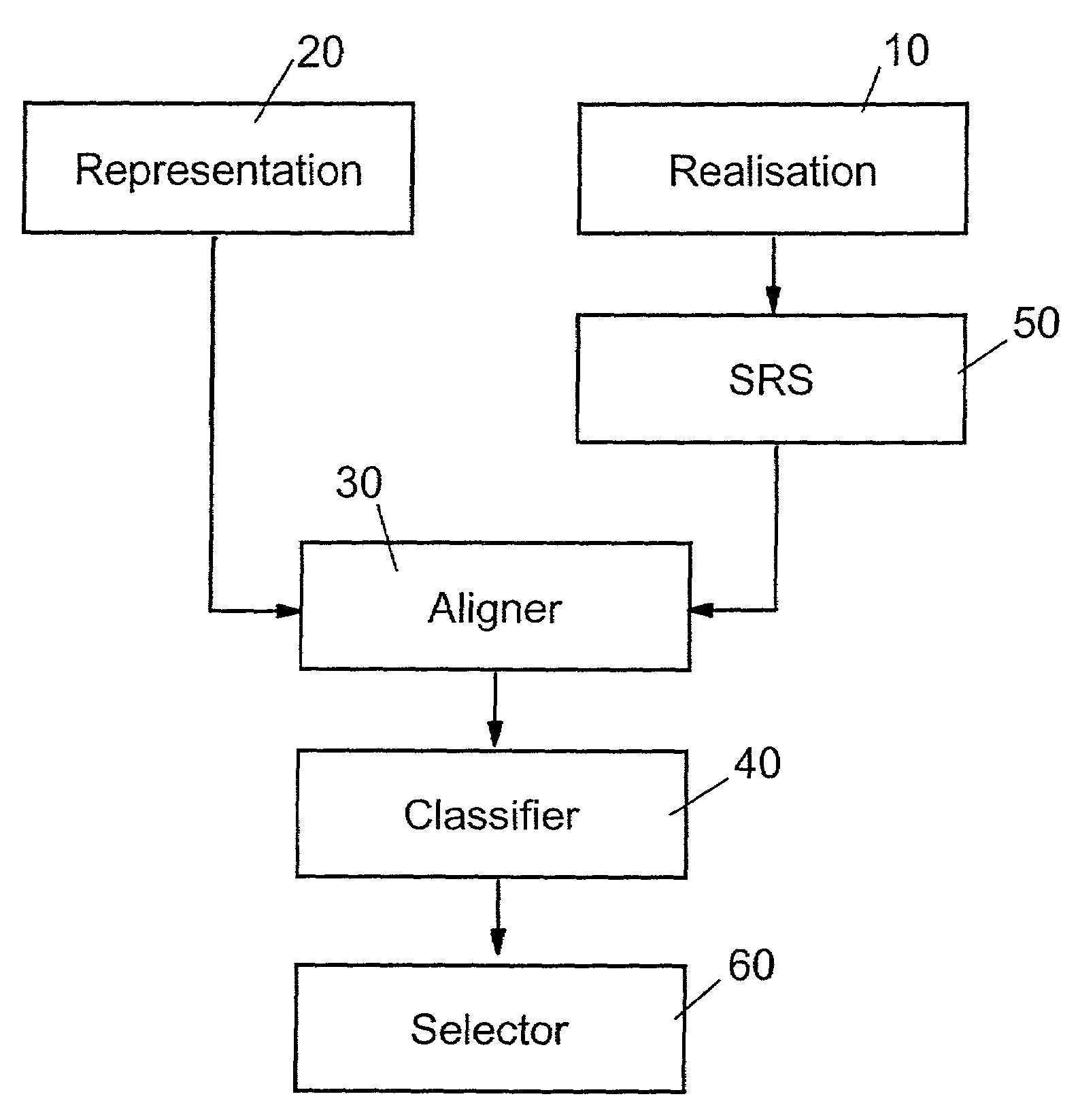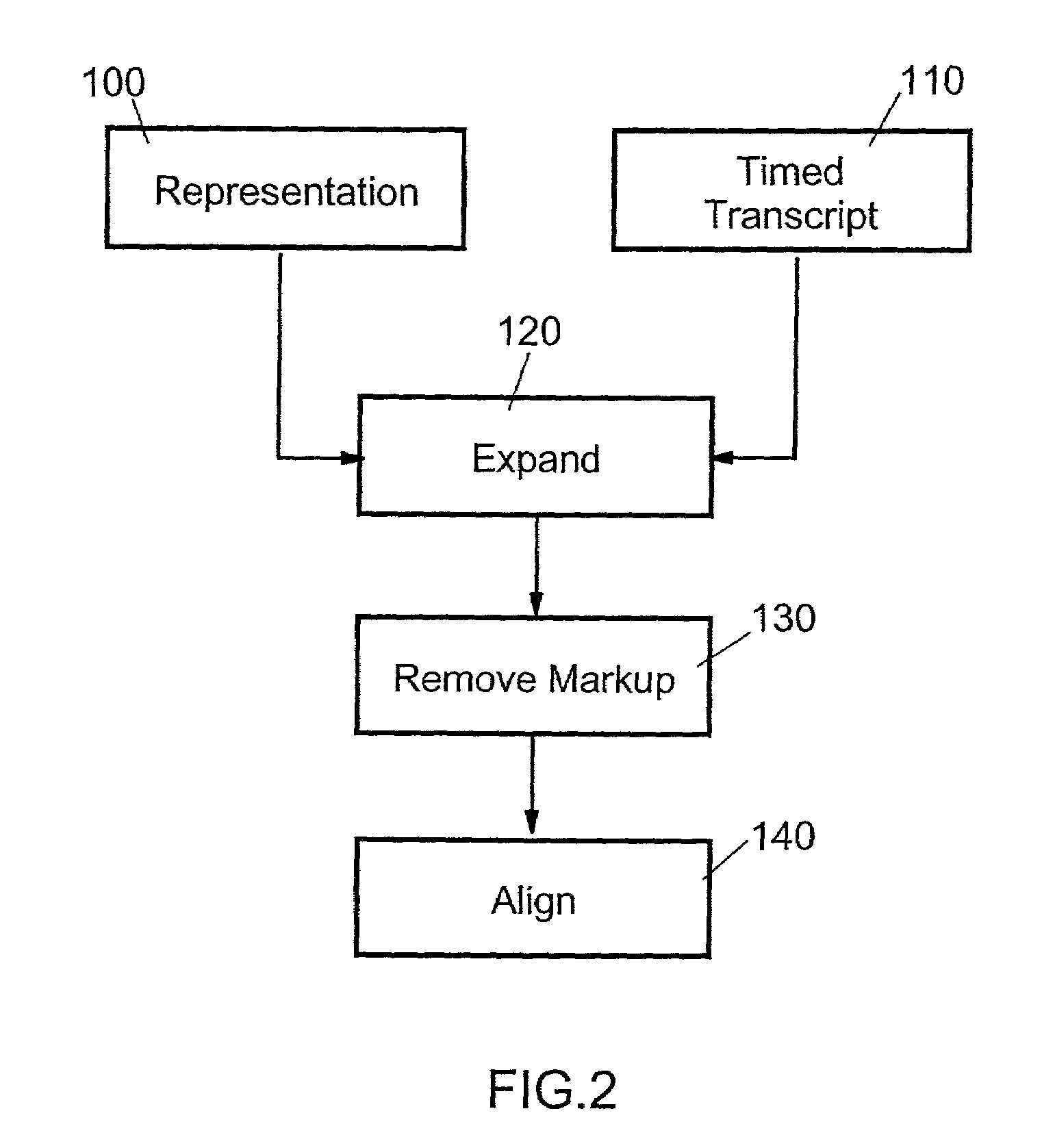Method and system for the automatic amendment of speech recognition vocabularies
a speech recognition and automatic amendment technology, applied in the field of computer assisted or computer-based speech recognition, can solve the problems of not preventing a speech recognition system from accurately recognizing a spoken word, laborious and costly procedures, and the mechanism cannot be fully automatic, so as to reduce the cost of vocabulary generation
- Summary
- Abstract
- Description
- Claims
- Application Information
AI Technical Summary
Benefits of technology
Problems solved by technology
Method used
Image
Examples
first embodiment
[0034]In the invention illustrated in FIG. 7, a basic vocabulary of a SRS automatically can be updated. The update, for instance, can be a vocabulary extension of a given domain or supplement of a completely new domain vocabulary to an existing SRS. For example, a domain such as radiology corresponding to the medical treatment field can be added. The proposed mechanism selects lines of the output of the classifier (FIG. 7) which include a tag bit of “1”, but include only non-identical single words such as “Wahn” and “Mann” in the present example. These single words represent single word recognition errors of the underlying speech recognition engine, and therefore can be used in a separate step to update a word database of the underlying SRS.
second embodiment
[0035]the present invention, as illustrated in FIG. 8, provides for an automated speaker related adaptation of an existing vocabulary which does not require active training through the speaker. Accordingly, only single words where the tag bit equals “1” are selected for which the true transcript (left column) and the recognized transcript (right column) are identical (FIG. 8). These single words represent correctly recognized isolated words and thus can be used in a separate step to update a pronunciation database of an underlying SRS having phonetic speaker characteristics stored therein.
PUM
 Login to View More
Login to View More Abstract
Description
Claims
Application Information
 Login to View More
Login to View More - R&D
- Intellectual Property
- Life Sciences
- Materials
- Tech Scout
- Unparalleled Data Quality
- Higher Quality Content
- 60% Fewer Hallucinations
Browse by: Latest US Patents, China's latest patents, Technical Efficacy Thesaurus, Application Domain, Technology Topic, Popular Technical Reports.
© 2025 PatSnap. All rights reserved.Legal|Privacy policy|Modern Slavery Act Transparency Statement|Sitemap|About US| Contact US: help@patsnap.com



